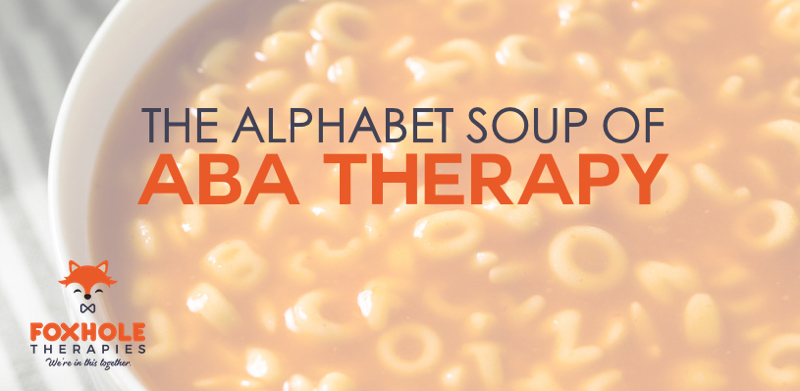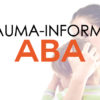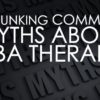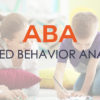
The world of behavior analysis can be overwhelming. When parents first get started pursuing ABA treatment for their child, they can get confused by all the letters and acronyms that are used for everything. To help you on your journey, here is a quick guide to making sense of the ABC’s of ABA.
ABA Terms and Definitions
ABA: Applied Behavior Analysis – ABA therapy is the practice of applying evidence-based techniques based on the science of behavior analysis to make socially significant behavior change.
BACB: Behavior Analysis Certification Board – this is the governing body of our field. They aim to protect consumers of behavior analytic services through setting credentialing guidelines, producing behavior analytic codes of ethics, and setting general standards of professional practice.
BCBA: Board Certified Behavior Analyst – this is someone with a master’s degree in behavior analytic coursework who has minimally 1500 hours of supervised practice and passed the BCBA exam set forth by the BACB. The BCBA is in charge of conducting assessments, creating interventions, training new technicians, creating treatment plans, supervising the interventions they put in place, and disseminating these interventions to care givers. BCBA credentials must be renewed every 2 years.
BCBA-D: Board Certified Behavior Analyst – Doctoral – this is a BCBA who has completed a PhD in an ABAI accredited program or a PhD in a relevant field to behavior analysis and has been published minimally two times in a behavior analytic journal.
BCaBA: Board Certified Assistant Behavior Analyst – this is essentially a BCBA-light. They can (depending on state and local guidelines) act as a BCBA, however, 5% of their hours each month must be supervised by a BCBA. You can think of this as a PA or NP in the medical field. BCABA credentials must be renewed every 2 years.
RBT: Registered Behavior Technician – RBTs are the heart and soul of ABA. They work directly with clients implementing the interventions put in place by their supervisor (typically a BCBA). To be an RBT you must complete a 40 hour training approved by the BACB, pass a competency assessment, have a high school diploma, and pass a written exam covering the roles and responsibilities of an RBT. RBT’s must have 5% of their hours supervised each month and renew their credential annually.







